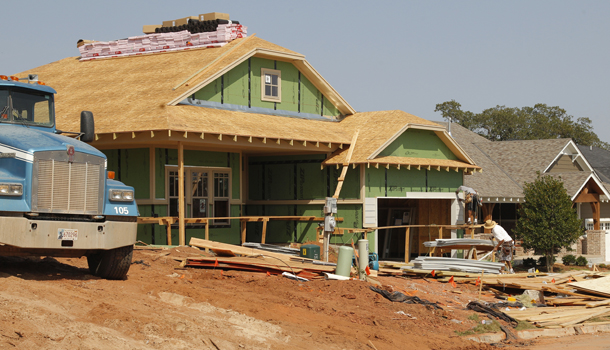
LOS ANGELES — Confidence among U.S. homebuilders rose this month to its highest level in six and a half years, driven by strong demand for newly built homes and growing optimism that the housing recovery will strengthen next year.
The National Association of Home Builders/Wells Fargo builder sentiment index released Monday increased to 46, up from 41 in October. That’s the highest reading since May 2006, just before the housing bubble burst.
Readings below 50 suggest negative sentiment about the housing market. The index last reached that level in April 2006. Still it has been trending higher since October 2011, when it stood at 17.
The survey is based on responses from 417 builders. The index sank to 8, its lowest point dating back to 1985, in January 2008.
Builders’ confidence has improved this year as the housing market has shown signs of a sustained turnaround.
U.S. sales of new homes hit a seasonally adjusted annual rate of 389,000 in September, an increase of nearly 6 percent from the previous month and the highest level in more than two years.
All told, sales of new homes have increased 27.1 percent over the past year, although sales remain well below healthy levels. Data on new-home sales in October are due out next week.
Sales of previously occupied homes rose 2.1 percent in October to a seasonally adjusted annual rate of 4.79 million, the National Association of Realtors said Monday. The sales pace is roughly 11 percent higher than a year ago, though sales remains below the more than 5.5 million that economists consider consistent with a healthy market.
Home sales have been bolstered by the lowest mortgages rates in decades. The average rate on the 30-year fixed mortgage has been below 4 percent all year. And that’s helped drive home prices higher in many markets.
Meanwhile, builders are starting to put up more homes.
Homebuilders started construction on new homes and apartments at the fastest pace in more than four years in September. They also requested the most building permits in four years, an indication that many are confident that gains in home sales will endure.
“In view of the tightening supply and other improving conditions, many potential buyers who were on the fence are now motivated to move forward with a purchase in order to take advantage of today’s favorable prices and interest rates,” said NAHB Chairman Barry Rutenberg, a homebuilder from Gainesville, Fla.
Even so, many factors remain a drag on the housing recovery. Many Americans, particularly first-time homebuyers, are unable to qualify for a mortgage or can’t afford larger down payments.
And while foreclosures are slowing and homeowners appear to be doing a better job of keeping up with their mortgage payments, a trove of bank-owned homes remain a possible drag on home prices.
As of the end of October, lenders were sitting on more than 590,000 foreclosed homes yet to be sold, according to RealtyTrac. At the current sales pace, it would take about 15 months for those homes to be sold.
Though new homes represent only a small portion of the housing market, they have a disproportionate impact on the economy. Each home built creates an average of three jobs for a year and generates about $90,000 in tax revenue, according to statistics from the National Association of Home Builders.
— Associated Press


